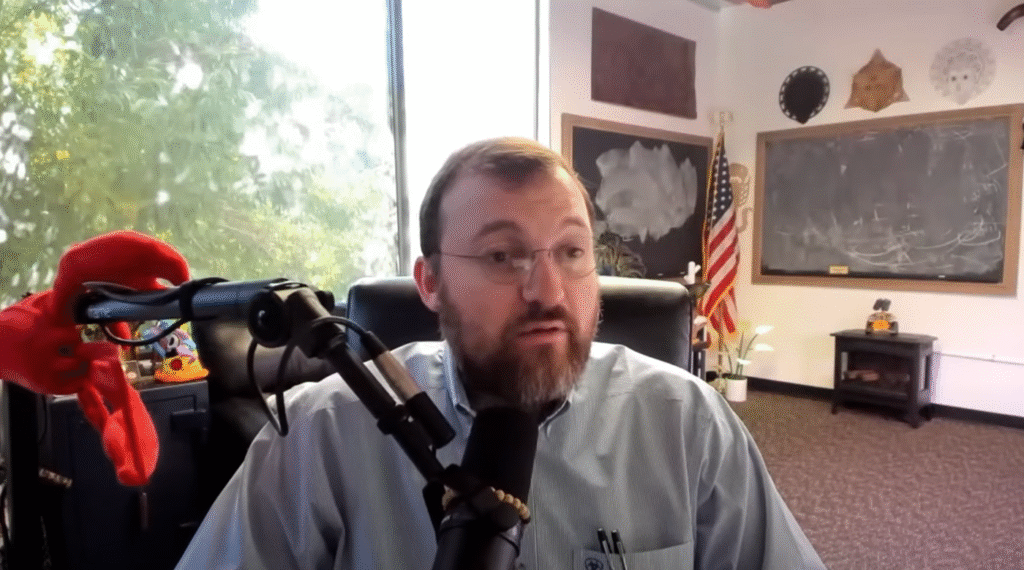In recent years, the cryptocurrency landscape has been rapidly evolving, drawing in investors, technologists, and enthusiasts alike. One of the key players has been Cardano, a blockchain platform known for its commitment to rigorous academic and scientific research in its infrastructure development. As digital assets like Cardano seek wider adoption, the integration of stablecoins such as USDC and USDT has become a focal point of discussion among community members and developers. Understanding the dynamics involved in these integrations can provide valuable insights into the future potential of blockchain technology and decentralized finance (DeFi).
The Dynamics of Cardano’s Relationship with Stablecoins
Cardano, under the stewardship of its founder Charles Hoskinson, has been navigating the complex landscape of blockchain integration with stablecoins like USDC and Tether. During a recent discussion, Hoskinson dispelled myths suggesting that the absence of these stablecoins on Cardano is due to strained relations or refusal to pay necessary fees. On the contrary, the process involves ongoing dialogues with both Circle, the issuer of USDC, and Tether. “We have routine conversations with Circle, roughly every couple of months, and have engaged with Tether numerous times,” Hoskinson noted, highlighting the collaborative nature of their discussions.
The Importance of DeFi and Total Value Locked (TVL)
Hoskinson emphasizes that the key obstacle is not friction with stablecoin issuers but rather Cardano’s need to bolster its DeFi landscape. Stablecoin integration is heavily influenced by metrics like Total Value Locked (TVL) and the maturity of the DeFi ecosystem—areas where Cardano is still developing compared to competitors like Ethereum and Solana. With Cardano’s TVL fluctuating between $300 million and $400 million, contrasting Solana’s $8 billion and Ethereum’s over $100 billion, stablecoin issuers find integrations less commercially viable without substantial pre-minted liquidity from the network itself.
The Misconception of Stablecoin Impact on DeFi Growth
Hoskinson challenges the prevailing notion that bringing USDC or Tether onto Cardano would automatically supercharge its DeFi ecosystem. Instead, he argues that a robust DeFi setup should naturally lead to stablecoin integration. Drawing parallels with Algorand, where heavy USDC minting didn’t significantly enhance DeFi traction, Hoskinson advises the community to focus on strengthening the internal Cardano ecosystem. Plans to establish a Cardano sovereign wealth fund and bootstrap liquidity reflect this strategic approach.
Exploring New Avenues: Bitcoin DeFi and Strategic Negotiation
In exploring new strategies, the potential inclusion of Bitcoin DeFi on Cardano is a significant consideration. Hoskinson posits that positioning Cardano as a platform for stablecoin issuance linked to Bitcoin and the Lightning Network could organically incentivize integrations from stablecoin providers. Such developments could bring substantial TVL into Cardano’s ecosystem, enhancing its appeal as a viable partner for Circle and Tether.
The Role of Strategic Communication and Internal Development
While external partnerships are essential, Hoskinson emphasizes the importance of internal growth and strategic communication. Strong internal development, coupled with clear, nuanced public communication, is vital. Despite misconceptions circulated on social media, the challenge remains in aligning strategic goals with tangible outcomes for Cardano’s DeFi future.
Common Questions Around Cardano and Stablecoins
Why are USDC and Tether not integrated with Cardano yet?
Cardano’s current DeFi ecosystem and Total Value Locked (TVL) metrics have not yet reached the scale that stablecoin issuers like USDC and Tether find commercially attractive. Ongoing discussions focus on aligning these elements to make integration more viable.
What’s the significance of TVL in cryptocurrency ecosystems?
TVL is a vital metric in evaluating the health and maturity of a DeFi ecosystem. It reflects the amount of capital locked in smart contracts and indicates the level of user trust and platform adoption—which are critical for attracting stablecoin integrations.
How can Bitcoin DeFi affect Cardano’s growth?
Integrating Bitcoin DeFi could significantly boost Cardano’s Total Value Locked (TVL) by attracting a wider user base, enhancing liquidity, and ultimately encouraging stablecoin issuers to consider integration due to increased network utility and demand.
Cardano continues to build its ecosystem with a strategic focus on long-term growth and sustainability. By cultivating a robust DeFi landscape, Cardano aims to create an organic demand for stablecoins, thereby strengthening its position within the evolving cryptocurrency marketplace.

